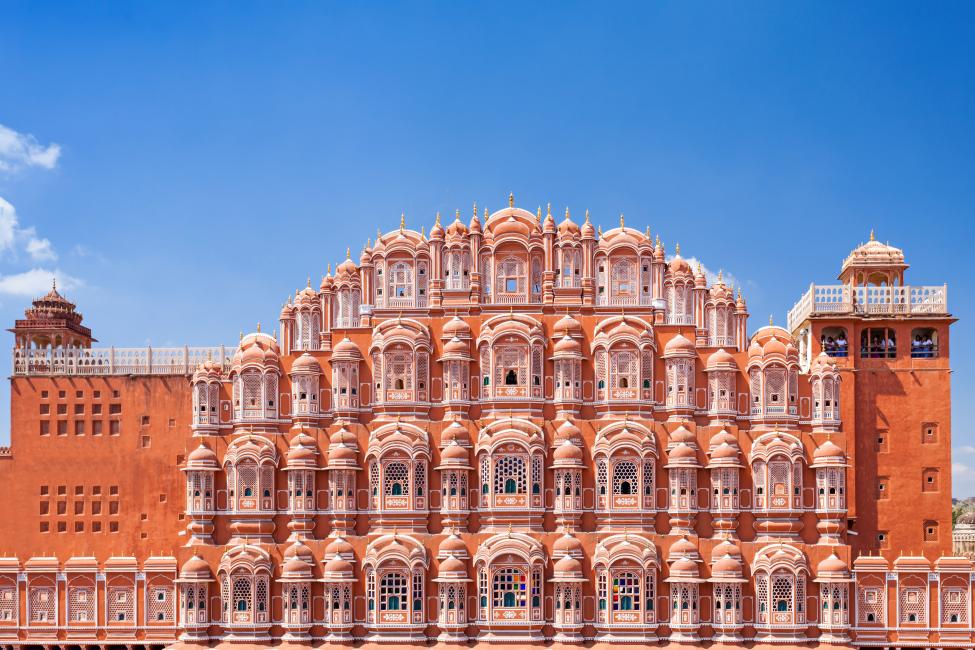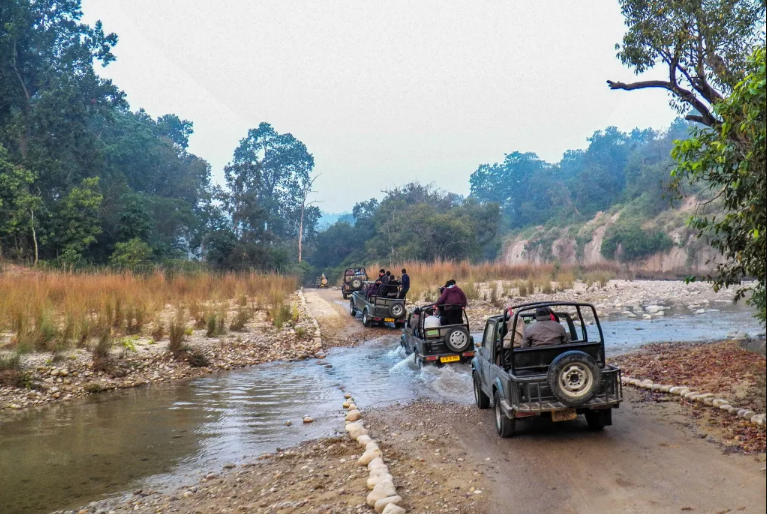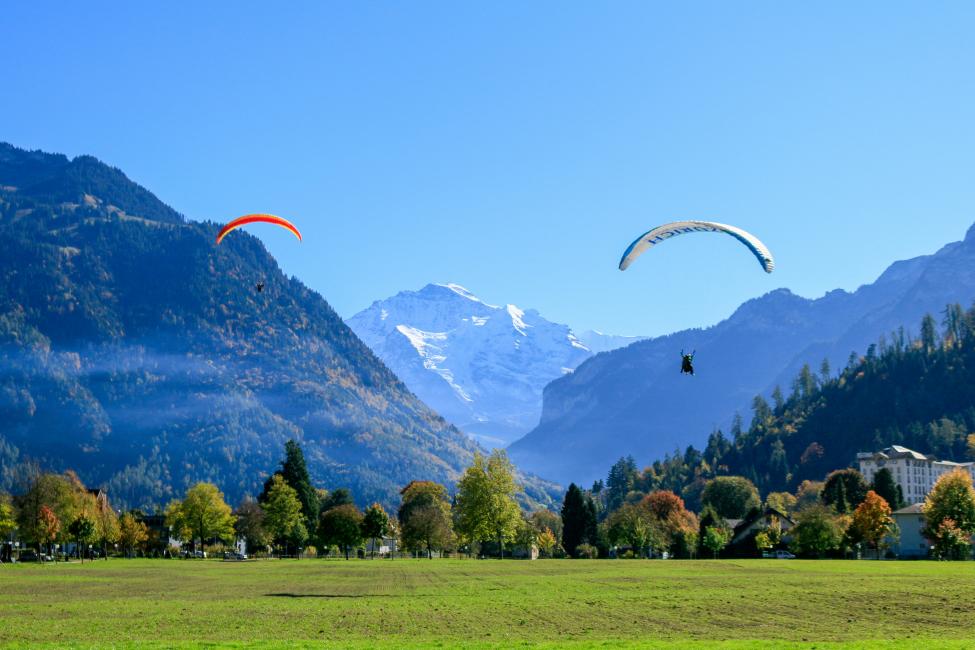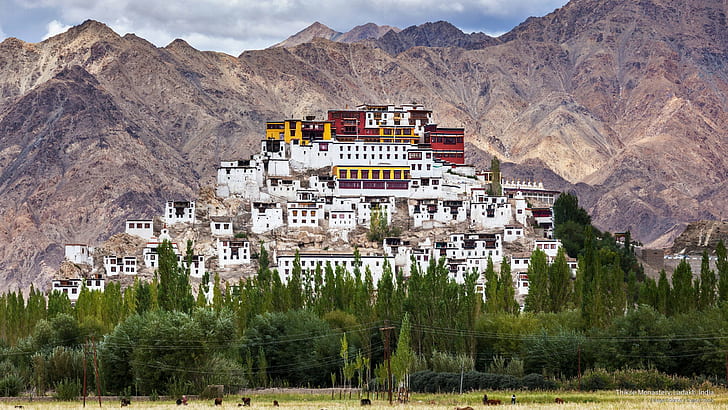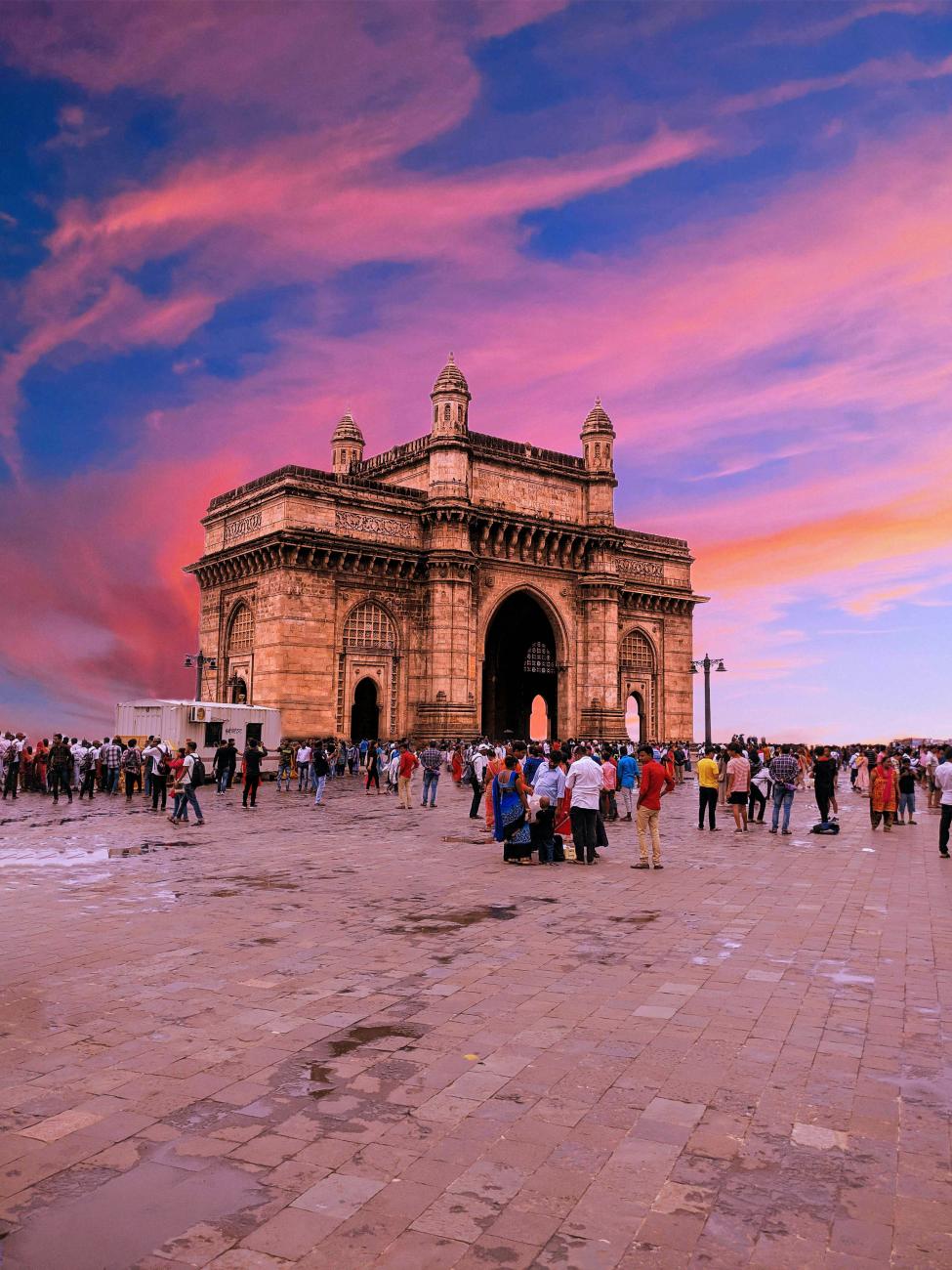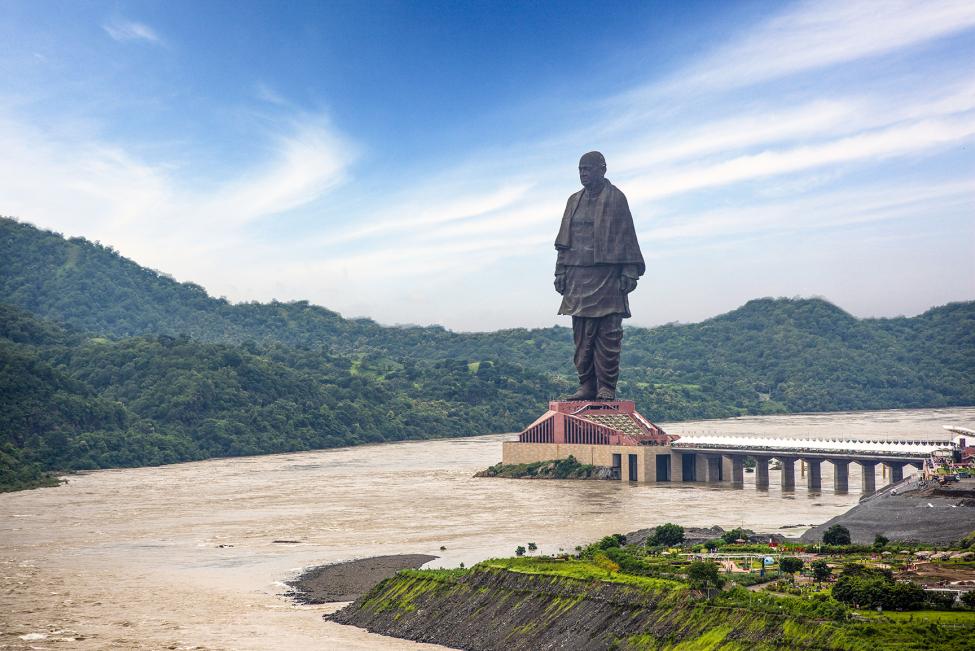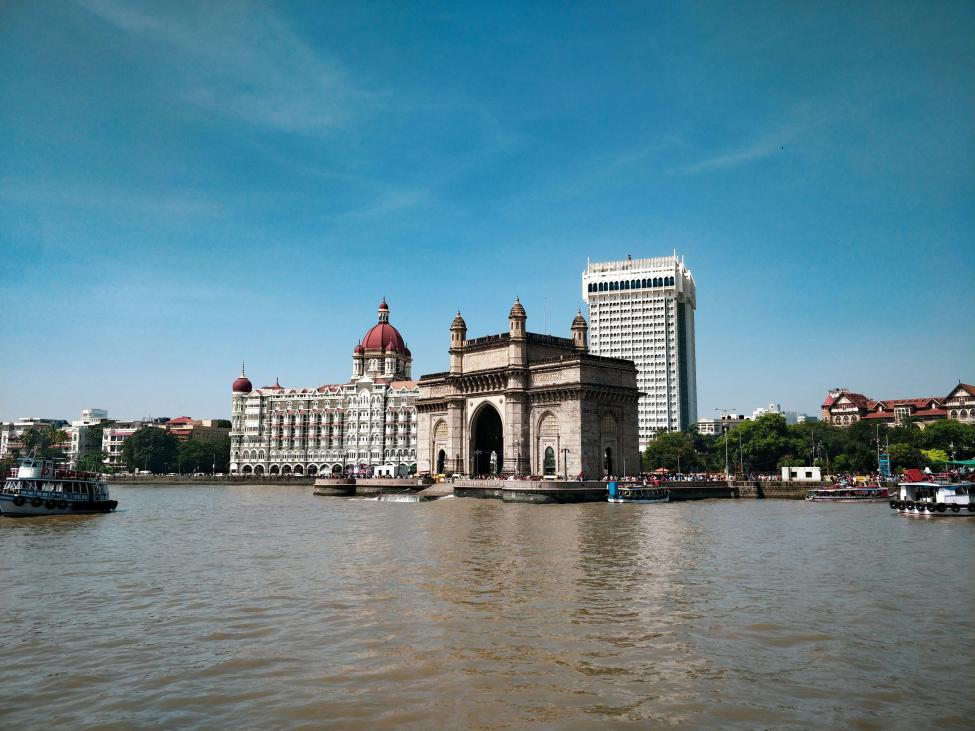 Shri Banke Bihari Temple, Vrindavan
Shri Banke Bihari Temple, Vrindavan
13 Must Visit Temples In Vrindavan | Temples in Vrindavan | Temples in Mathura
Vrindavan, the land of Lord Krishna’s divine pastimes, is home to some of the most sacred and historic temples in India. From the ancient charm of Radha Madan Mohan to the vibrant devotion at Banke Bihari and the spiritual peace of ISKCON Vrindavan, every temple tells a story of love, faith, and timeless devotion. Whether you seek history, serenity, or spiritual awakening, Vrindavan’s temples offer a soul-stirring journey into the heart of Krishna Bhakti.
1- Radha Raman Temple - Vrindavan,
Radha Raman Temple is one of Vrindavan’s oldest and most quietly powerful shrines. Built in the 16th century by Gopala Bhatta Goswami, the temple is famous because the principal deity is said to have self-manifested from a Shaligram. Devotees call the Lord Radha-Raman - the one who brings joy to Radha. That story sets the tone: visiting here feels intimate, like entering a small, sacred living room where centuries of devotion still breathe. The temple’s architecture is modest but lovingly kept; the sanctum glows with brass lamps, old paintings and the steady murmur of mantras. Unlike larger, touristy temples, Radha Raman offers a quiet darshan - time to sit, listen and absorb ancient bhakti.
Locals and saints point out small things that make the place special: the way the priests dress the deity, the old handwritten manuscripts kept in the temple archive, and the evening kirtans that seem to unravel the day’s tensions. The temple sits tucked in narrow lanes, so getting there includes the little pleasure of walking through Vrindavan’s market alleys - buying a garland, a sweet, and getting a whiff of incense.
For pilgrims, Radha Raman is both devotional destination and a gentle teacher: it invites slow presence and reverence rather than spectacle. Whether attending the morning mangal aarti or simply sitting near the sanctum, visitors often leave feeling lighter and more centered, Read more …
Timings / Entry / Time Required:
- Timings: 5:00 AM - 12:00 PM & 4:00 PM - 9:00 PM (seasonal variations)
- Entry Fee: Free
- Avg Time Needed: 45 - 75 minutes
- Attraction Level: Top - spiritual seekers & devotees
2- Radha Vallabh Temple (Radha Vallabha Mandir) - Vrindavan,
Radha Vallabh Temple is a center of pure Radha-bhakti. Founded by Hit Harivansh Mahaprabhu in the 16th -17th century, this shrine is unusual: it honours Radha as the primary form and worships Krishna with a crown placed beside the Lord to represent Radha’s presence. The mood here is intimate and fierce - devotees express intense love for Radha in music, poetry and ritual. The temple compound is compact yet elegant, filled with flower offerings, bhajan sessions, and a clear, devotional energy that seems to stay with visitors long after they leave.
The tradition here emphasizes seva (service) and poetic devotion. The daily schedule includes several aartis and singing sessions; the language of worship is old bhakti poetry - many verses are centuries old. Pilgrims who seek a more inward and emotional experience of devotion prefer Radha Vallabh because the rituals focus on Radha’s feelings and connection with Krishna rather than elaborate temple pomp.
Walking into the temple at aarti time is moving: lamps are lit, voices swell, and the whole hall seems to pulse. Many return visitors speak about having had visions or deeply peaceful moments in the courtyard. The temple also hosts festivals where classical singing and poetry recitals bring the old bhakti tradition vividly alive, Read more …
Timings / Entry / Time Required:
- Timings: 4:15 AM – 12:45 PM & 4:30 PM – 9:00 PM (approx; seasonally shifted)
- Entry Fee: Free
- Avg Time Needed: 30 - 60 minutes
- Attraction Level: Top for devotees, Medium for casual tourists
3- Radha Madan Mohan Temple - Vrindavan,
Radha Madan Mohan Temple sits near the Yamuna and is beloved for its old-world charm. The temple traces back to the late 16th century and is associated with Sanatan Goswami and his circle who revived temple worship in Braj. “Madan Mohan” - the enchanter of desire - is worshipped here with a soft, devotional style. The red sandstone temple rising by the river, its small courtyards and the view over the Yamuna create a very meditative atmosphere.
Over time the original idol was safeguarded - stories vary - but the present shrine preserves the lines of devotion that began hundreds of years ago. Rituals are traditional: simple morning prayers, mid-day rest for the deity, evening aarti with lamps and bhajans. The priested rituals feel like a living thread to the Goswami era and many scholars visit to study the oldest practices still in use.
For a visitor, Radha Madan Mohan is a place to slow down. The ghats nearby offer a ritual bath and the temple steps are a restful place to watch river life. Photography is cautious and discreet - the emphasis is on reverence. During festivals like Janmashtami the temple is beautifully lit and the energy turns joyful and celebratory, Read more …
Timings / Entry / Time Required:
- Timings: 5:00 AM - 12:00 PM & 4:00 PM - 8:30 PM (seasonal)
- Entry Fee: Free,
- Avg Time Needed: 45 - 90 minutes
- Attraction Level: Top - spiritual + architectural interest
4- Govind Dev Ji Temple - Vrindavan,
Govind Dev Ji Temple is a grand, red-sandstone monument with a strong historical presence. Built in the late 16th century by Raja Man Singh of Amber, the temple once rose many stories high; over time parts were damaged but the remaining structure still impresses. The shrine was originally connected to the Jaipur tradition - the deity was safeguarded and shifted to protect it; the Vrindavan temple continues to honor that ancient lineage.
The temple’s architecture is remarkable for Vrindavan: broad courtyards, carved arches and a sense of regal scale. Inside, the rituals are rich and formal - a procession of offerings, ornate aartis and a layered schedule of worship. For devotees, Govind Dev Ji is important for its historical continuity and the ancient style of worship that links Braj to royal patronage.
Visiting here feels a bit like stepping into a royal chapel of devotion: music, incense and structured ceremony. The site draws historians, devotees and photographers all at once because of the architecture and the intense devotional atmosphere. Festival days are lively - the temple courtyard fills with colors, processions and classical music performances.
For travelers, the temple is easy to combine with other nearby shrines. The local guides will happily explain the rooftop views and the old inscriptions. It’s a place to linger, read the stones and feel the long timeline of worship in Braj, Read more …
Timings / Entry / Time Required:
- Timings: 5:00 AM – 12:00 PM & 4:00 PM – 8:00 PM (approx)
- Entry Fee: Free (donations welcome)
- Avg Time Needed: 60 - 90 minutes
- Attraction Level: Top - history + architecture + devotion
5- Radha Damodar Temple - Vrindavan,
Radha Damodar Temple was established by Jiva Goswami in the 16th century and has been a calm centre for study and worship ever since. One of its most treasured relics is the Govardhan Shila - a sacred stone with footprints believed linked to Krishna - which gives the temple deep spiritual value. The inner sanctum and the courtyard retain a sense of quiet devotion, it’s a place many come to sit and chant quietly rather than to take many photographs.
This temple also has an interesting modern connection: A.C. Bhaktivedanta Swami Prabhupada, the founder of ISKCON, lived and wrote in Vrindavan, and devotees note his association with several traditional temples including Radha Damodar. That living lineage gives the place a bridge between old-style Goswami worship and contemporary bhakti movements.
The daily life of the temple is steady: early mangal aarti, midday rest for the deity, and evening bhajans that gather a gentle crowd. The temple library holds manuscripts and documents that scholars value. For first-time visitors, the feeling is of stepping into a slow, dignified ritual rhythm; for returning pilgrims, it’s the steadiness and authenticity that draw them back, Read more …
Timings / Entry / Time Required:
- Timings: 4:30 AM - 12:00 PM & 4:00 PM - 8:30 PM (seasonal)
- Entry Fee: Free; donations to support temple activities recommended
- Avg Time Needed: 45 - 75 minutes
- Attraction Level: Top - deeper spiritual seekers & scholars
6 -ISKCON Temple (Sri Sri Krishna Balaram Mandir) - Vrindavan,
ISKCON Vrindavan - Krishna Balaram Mandir - is world-famous and a vibrant hub of devotion, music and food. Established by Srila Prabhupada in the 1970s, it became the global center for ISKCON and a major spiritual destination. Compared with older Goswami temples, ISKCON brings festival energy, structured programs, guest facilities and a large volunteer community. Here, the Hare Krishna chanting fills the air day and night and visitors are welcome to join kirtans, classes and prasadam meals.
The temple complex blends the serene white of carved marble with bustling activity: gift shops, a vegetarian restaurant (Govinda’s), lecture halls and clean guest rooms. The daily aartis are full of rhythmic singing and dance and draw a mixed crowd: international devotees, families and local pilgrims. Festival days - Janmashtami, Gaura Purnima and Kartik - turn the compound into a sea of color and food distribution.
Some visitors choose ISKCON for the clarity of teachings - clear schedules for classes, English-language literature and a friendly volunteer atmosphere. For first-timers, the temple is an ideal introduction to organized bhakti practice. For long-term pilgrims, ISKCON complements traditional daily worship by offering extended programs, youth initiatives and a global community, Read more …
Timings / Entry / Time Required:
- Timings: Morning to evening (mangala aarti very early, evening aarti around sundown; typically open early 4:30 AM - 1:00 PM and 4:00 PM - 8:30 PM)
- Entry Fee: Free; donations welcome; guesthouse costs apply if staying
- Avg Time Needed: 60 - 120 minutes (more if attending programs or staying for meals)
- Attraction Level: Top - tourists & devotees (very accessible)
7- Banke Bihari Temple - Vrindavan,
Banke Bihari Temple is perhaps the most celebrated temple in Vrindavan - crowded, joyful and intensely devotional. The deity, Banke Bihari, is Krishna in a charming tribhanga pose. The story goes that the idol came from Nidhivan and was installed in the 19th century; since then the temple ritual has evolved unique features: the curtains open and close frequently during darshan and the overall atmosphere combines ecstatic devotion with strict tradition.
Visiting Banke Bihari is often loud and crowded, but deeply moving. Bhajans swell, priests perform lively aartis, and the courtyard thrums with energy. The temple draws throngs during Holi and Janmashtami - it is among the most popular pilgrimage stops in Braj. The building itself is compact; lines form quickly so early arrival helps. The temple policy on dress and behaviour is traditional: modest clothes, respectful conduct, and patience during long queues.
For many devotees, being in Banke Bihari’s presence is transformative. Stories of emotional release, consolation, and even physical healing are told by those who visit with heartfelt intent. For photographers and casual tourists, the temple is a place to observe rather than pose - always with respect, Read more …
Timings / Entry / Time Required:
- Timings: Morning and evening darshan only (7:45 AM - 12:00 PM & 5:30 PM - 9:30 PM - check current local times)
- Entry Fee: Free,
- Avg Time Needed: 60 - 120 minutes (longer on festivals)
- Attraction Level: Top - essential for devotees; high crowd levels
8- Prem Mandir - Vrindavan,
Prem Mandir is the modern jewel of Vrindavan’s temple scene. Inaugurated in 2012 and built of pristine white marble, the temple was commissioned by Jagadguru Kripalu Maharaj and stands as a monument to divine love. Unlike the ancient Goswami shrines, Prem Mandir is designed for spectacle and contemplation: large carved panels depict Krishna’s pastimes, life-size sculptural scenes walk you through episodes from the Puranas, and the sprawling landscaped gardens invite evening strolls.
The highlight for many visitors is the evening light and musical fountain show. As dusk falls, colored lights animate the marble façade and fountains dance to devotional music. The experience is curated - comfortable pathways, benches and thoughtful layout make it easy for families and photographers. Entry is free, which is part of the temple’s public-service spirit, but the grounds are run carefully with helpful staff and clean facilities.
Inside, the sanctum rooms are beautifully decorated with deities and floral arrangements. Rituals are traditional, but the scale is large and the presentation modern. Prem Mandir is very visitor-friendly - wide paths, toilets, and clearly signed areas make it an attractive stop for international tourists and families who may find narrow Vrindavan lanes otherwise challenging.
The temple fills quickly in the evenings and especially during festival seasons. If visiting for the light show, arrive early to take a stroll through the gardens and find a comfortable spot. Prem Mandir is a good contrast to the older shrines - it shows how devotion adapts beautifully to modern settings without losing heart, Read more …
Timings / Entry / Time Required:
- Timings: 5:30 AM - 12:00 PM & 4:30 PM - 9:00 PM (light show after sunset)
- Entry Fee: Free
- Avg Time Needed: 60 - 120 minutes (including gardens + light show)
- Attraction Level: Top - tourists & devotees (very photogenic)
9- Seva Kunj & Nidhivan (sacred grove) - Vrindavan,
Seva Kunj and Nidhivan together form one of Vrindavan’s most mystical spots. The stories are well known: every night Lord Krishna and Radha return to Nidhivan for the Rasleela; therefore no one is permitted to stay inside after dusk. The tulsi plants in Nidhivan are bent and entwined in strange shapes - locals treat them as living witnesses to the divine dance. Seva Kunj, which lies adjacent, is the garden where Radha is said to have served Krishna; it is gentle and fragrant by day.
Whether one interprets the stories literally or as poetic myth, walking the paths at dawn is an experience. The quiet is tangible and many visitors speak of a presence that’s hard to describe. The caretakers maintain a respectful silence and there are clear rules - no sleeping in the grove and no photography in restricted zones. The place is great for contemplative visitors who want to feel the devotional pulse of Vrindavan.
Pilgrims often time visits for early morning when priests perform brief rituals; otherwise, spending a slow hour walking the shaded paths is ideal. The emotional tone is inward and poetic rather than outwardly celebratory, Read more …
Timings / Entry / Time Required:
- Timings: Typically open early morning to early evening (5:00 AM - 7:00 PM) - strictly closed at night
- Entry Fee: Free,
- Avg Time Needed: 30 - 90 minutes (best at dawn)
- Attraction Level: Top - spiritual seekers & devotees
10- Kesi Ghat (Yamuna ghat & nearby temples) - Vrindavan,
Kesi Ghat is a riverside place of calm, named for the myth of Krishna defeating the Kesi demon. It marks the point where the divine story meets everyday life: people bathe in the Yamuna, priests perform rituals and boat rides drift by at sunrise. The ghat’s stone steps, cool breeze and open view of the river make it among the most photogenic spots in Vrindavan.
The ghat is adjacent to several old temples, so a visit usually blends river devotion with temple darshan. The morning aarti here is gentle - lamps, water offerings and the tranquil sound of conch shells. Photographers and contemplatives love sunrise; families and pilgrims gather for a ritual dip or to float small diyas in the evening.
Kesi Ghat feels less crowded than city-center temples and yet it’s central to ritual life: weddings, thread ceremonies, and daily pujas all use the steps. Boats operate seasonally and local guides can offer short rides that show the riverscape and temple silhouettes, Read more …
Timings / Entry / Time Required:
- Timings: Open 24 hours; recommended visiting 5:00 AM - 8:00 PM for best experience
- Entry Fee: Free; boat rides charged separately (nominal)
- Avg Time Needed: 30 - 90 minutes
- Attraction Level: Medium - Top for devotees who like ghats and river rituals
11- Rangji Temple (Ranganatha/Rangnath Ji Mandir) - Vrindavan,
Rangji Temple in Vrindavan stands out visually. Built in the Dravidian (South Indian) temple style, it was established by Maharaja of Jaipur for the Ranganatha form of Vishnu (Rangnath Ji). The temple’s pyramidal shikharas, bright colors and carved pillars are unlike most Braj architecture, making it a photographic and cultural curiosity.
Beyond style, Rangji Temple is an active worship site drawing both locals and visitors who admire the different ritual flavor - a blend of South Indian and Vaishnava customs. The inner sanctum contains richly decorated deities and the temple hosts regular kirtans and festivals where classical music may accompany the rituals. For travelers curious about India’s diversity of temple architecture, Rangji offers a vivid lesson.
The temple courtyard often feels joyful: children running, priests preparing flower offerings and lamps being polished. Visiting here gives a sense of the wider reach of Krishna devotion across India - how different regions speak the same devotion in varied architectural dialects, Read more …
Timings / Entry / Time Required:
- Timings: 5:00 AM - 12:00 PM & 4:00 PM - 8:00 PM (approx.)
- Entry Fee: Free,
- Avg Time Needed: 30 - 60 minutes
- Attraction Level: Medium - strong for architecture lovers; medium devotion draw.
12- Gopinath Temple - Vrindavan,
Gopinath Temple is a quiet, devotional shrine honoring Gopinath - Krishna as the cherished lord of the Gopis. With modest compound and warm priestly hospitality, this temple tends to draw devotees who prefer simple, heartfelt worship over spectacle. Its music sessions are soulful and regular - bhajans often unfold in the early evening and draw a steady circle of local singers.
Historically tied to Vrindavan’s bhakti revival, Gopinath preserves old songs and ritual forms that remind visitors of the town’s spiritual essence. The temple is particularly welcoming to those who wish to chant and sit for longer periods; benches and shaded corners invite quiet contemplation.
Festival days are intimate: the small courtyard fills with garlands and local sweets. The atmosphere is devotional rather than touristy, and many visitors say they feel at home here, Read more …
Timings / Entry / Time Required:
- Timings: Morning & evening aarti hours (5 - 9 AM & 4 - 8 PM)
- Entry Fee: Free
- Avg Time Needed: 20 - 45 minutes
- Attraction Level: Medium - best for devotees & quiet visitors
13- Radha Gokulananda Temple - Vrindavan,
Radha Gokulananda Temple celebrates the pastoral charm of Krishna’s youth - Gokulananda evokes images of cowherd pastimes, butter, and playful pastimes with the Gopis. The temple preserves devotional art and sculptures that speak to the countryside stories of Braj. For anyone wanting a softer, rural expression of Krishna devotion, Radha Gokulananda offers that feeling warmly.
The temple is family-friendly and often hosts children’s bhajan sessions and small cultural programs. It’s a favorite for those visiting with elders or families because the rituals are accessible, slow and heartfelt. The priests are welcoming and encourage participation in simple seva, like offering flowers or lighting lamps, Read more …
Timings / Entry / Time Required:
- Timings: Typical temple hours (mornings & evenings)
- Entry Fee: Free
- Avg Time Needed: 20 - 45 minutes
- Attraction Level: Medium - family friendly, devotional

 Udaipur - The City of Lakes and ..
Udaipur - The City of Lakes and .. Ajatshatru Fort, Rajgir - A Time..
Ajatshatru Fort, Rajgir - A Time.. Sanskriti Museums - Hidden Cultu..
Sanskriti Museums - Hidden Cultu.. Feroz Shah Kotla Fort Delhi - Hi..
Feroz Shah Kotla Fort Delhi - Hi.. Agra Fort - The Glorious Mughal ..
Agra Fort - The Glorious Mughal .. Bhimtal & Sattal near Nainital. ..
Bhimtal & Sattal near Nainital. .. Heritage & Culture Trips from De..
Heritage & Culture Trips from De.. Patna Museum - A Treasure House ..
Patna Museum - A Treasure House .. Select Citywalk Mall Delhi – S..
Select Citywalk Mall Delhi – S.. Dwarka, Gujarat - The City of Lo..
Dwarka, Gujarat - The City of Lo.. Tughlaqabad Fort – The Stone G..
Tughlaqabad Fort – The Stone G.. Prem Mandir Vrindavan | Timings,..
Prem Mandir Vrindavan | Timings,.. Rajaji National Park Uttarakhand..
Rajaji National Park Uttarakhand.. Bharatpur Bird Sanctuary - A Par..
Bharatpur Bird Sanctuary - A Par.. Nageshwar Jyotirlinga - The Sacr..
Nageshwar Jyotirlinga - The Sacr..
